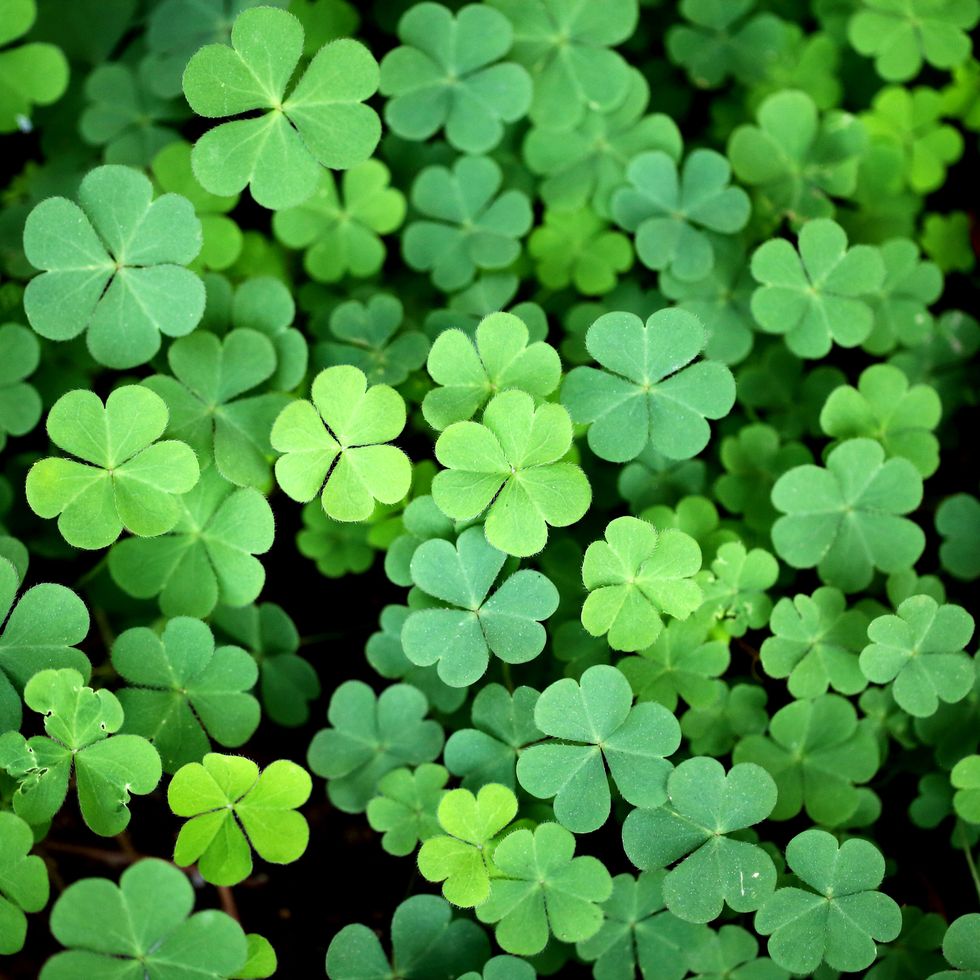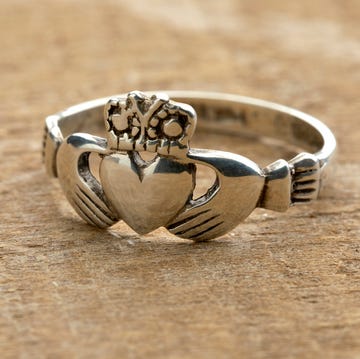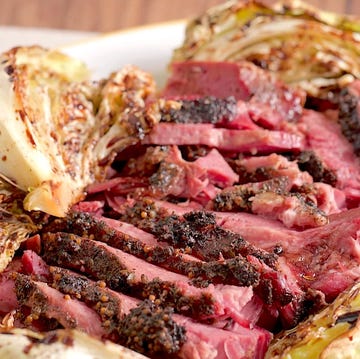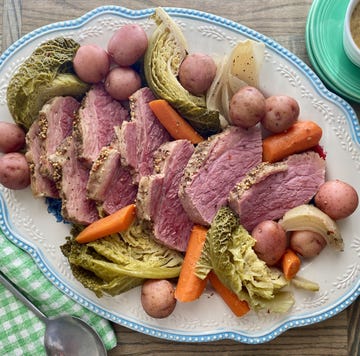When St. Patrick's Day rolls around, it's natural to feel particularly plucky—in more ways than one. Not only does the holiday inspire us to adopt a bold and spirited persona like the Irish, but to actually pluck a four-leaf clover for good luck! Or is it a shamrock? Between all the glowing green beer, green grub, and dazzling St. Patrick's Day decorations, it can be hard to keep the symbols of St. Patrick's Day straight. You've got rainbows, leprechauns, gold...and the mysterious green plant in question.
The whole shamrock versus clover confusion plays out in so many aspects of the holiday, whether we notice it or not. They're often used interchangeably in DIY decorations and even as St. Patrick's Day accessories. But as many an Irish lad or las will tell you, there is indeed a distinct visual and symbolic difference between shamrocks and clovers. One of them has a special place in the history of St. Patrick's Day and religious lore about Saint Patrick. Here, we explain what that difference is and answer perhaps the biggest question of all. Which is lucky: shamrocks or clovers? 🍀
Shamrock vs. clover: what's the difference?
All shamrocks are clovers, but not all clovers are shamrocks. How can that be, you ask? Clover is the common name for plants of the genus Trifolium (from the Latin tres 'three' + folium 'leaf'), which is comprised of about 300 species. As you might guess from the name, clovers typically have three leaves. Occasionally, though, clovers will grow four leaves.
So, the shamrock symbol is a typical clover with three leaves. St. Patrick's Day shamrocks are usually green, but clovers can also be purple, green, or white.
Shamrocks have been the unofficial national flower of Ireland for centuries, according to TIME. The patron saint of Ireland, Saint Patrick, used the shamrock as a symbol to explain the Holy Trinity when he was converting the Irish to Christianity. Or so the legend goes. Either way, three-leaf clovers are plentiful in the emerald isle, and it eventually became common practice to wear them for the holiday.
Which is lucky: shamrock or clover?
While indistinguishable to most, the shamrock and clover differ in many ways. The shamrock carries religious ties, while the four-leaf clover is considered a sign of luck due to its exceeding rarity. In fact, around one out of 10,000 clovers have four leaves. And while shamrocks grow in clumps, four-leaf clovers are rare and grow one at a time.
As for the difference in symbolism between shamrocks and clovers, shamrocks are recognized as representations of the Holy Trinity: the Father, the Son, and the Holy Spirit. On the other hand, the four leaves of a clover symbolize love, faith, hope, and luck. So, if you want to find a four-leaf clover in addition to your St. Patrick's Day shamrocks to double your luck, you better start searching ASAP!
Do shamrocks only grow in Ireland?
While Irish folklore claims shamrocks to be so endemic to Ireland that they won't grow on foreign soil, the prominence of the plants most closely associated with the name "shamrock" outside of Ireland tells a different story.
Two of the most common clovers of the genus Trifolium are the white clover (Trifolium repens) and the suckling clover (Trifolium dubium). Both types of clovers are originally native to Europe but are also found in North America and even parts of Asia. So, while Ireland is famous for them, shamrocks grow in many places around the globe!

Micaela Bahn is a freelance editorial assistant and recent graduate from Carleton College, where she majored in English literature. She loves running, photography, and cooking the best new recipes.













